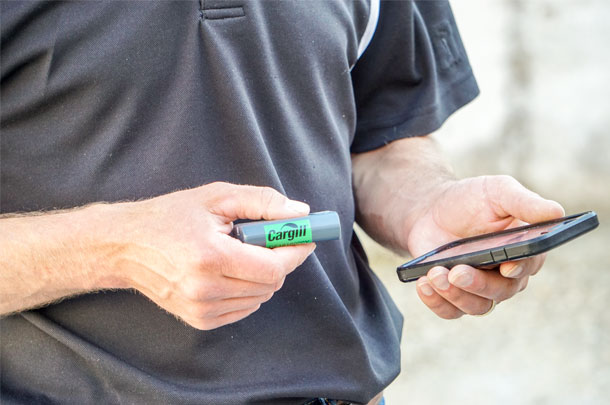Technology has changed the way dairies do business—from the apps that show market prices, to the automated technologies in the milking parlor – progressive farmers are always looking for new ways to advance their operations. And when it comes to analyzing forage, U.S. dairy farmers face a unique challenge.
Forage variation can occur at any point throughout the year due to the change in season and storage methods for feedstuffs. In order to maintain optimum herd performance, feed ingredients should be analyzed for moisture content often to allow farmers to react in real-time to the needs of their cows.
When it comes to nutrition for your herd, it pays to pay attention. The potential costs of dry matter (DM) variance can manifest itself in a decrease in animal performance and feed efficiency as well as increased health problems and feed costs. Once health issues start within a herd, it can be difficult and costly to correct.
“When dry matter changes, it changes the ration. Cows may be getting too many nutrients which may not be a health or production risk, but it can certainly impact the bottom line,” said Shane St. Cyr, Cargill Strategic Dairy Services and Technology Scout. “On the other hand, if the ration doesn’t match what we think is being fed to the cows, they may have a nutritional loss and a cow can’t physically eat enough to make up for it.”
There are three rations on every dairy, or so the old saying goes: the ration on paper, the ration delivered to the cows and the ration the cows actually consume. The variation between all three can add up quickly. Moisture content in the feedstuffs after an evening rain can impact the herd for the remainder of the day if the feed isn’t adjusted to account for the change in dry matter.
Research by the University of Wisconsin shows a range of three to eight percentage points of dry matter within lots of both corn silage and haylage, and variation of six to 10 percent DM between lots of both silage types. With today’s precision rations, those variations could lead to a drop in performance and health of the herd.
“Measuring is knowing. The more we know for sure, the better the decisions we can make,” said St. Cyr. We can make estimates on the change of the dry matter after a rain event but if we actually know what is happening with our forage, we can manage it correctly.”
Thanks to advancements in technology, there are new tools available which give dairy farmers the ability to analyze forage quickly and accurately.
Speed and accuracy translate into cost-saving factors for dry matter samples. In the 45 minutes to an hour it takes to analyze samples with an on-farm approach, a load or more of feed may have already been fed to the cows creating a domino effect of nutritional differences that can be hard to correct later on.
What if a dairy could analyze dry matter variation daily with a device small enough to fit in the palm of a hand? A real-time “picture” of the forage dry matter, analyzed in around two minutes, would allow feedstuff to be adjusted to fit what the cows actually needed in their rations, which has a direct impact on milk yield as well as the health and performance of cows.
No longer would the old saying about three rations have any truth to it – what was being fed to the cows would fit what was on paper, consistently – 365 days a year without the hassle of shipping samples to an off-site lab or waiting a long stretch of time to determine the actual dry matter variance by drying out a forage sample.
 Cargill Animal Nutrition
Cargill Animal Nutrition Dry matter management has had many advancements over the past few years, but time and cost restrains have prevented many dairy farmers from implementing effective management protocols. Now, with the digital technology of Reveal®, dairies have a cost-effective, precise and convenient way to measure dry matter, making management of variation a practical reality.
Dry matter can be analyzed multiple times a day in any location by anyone – feeder, farm manager, dairy owner and nutritionist. The investment in this technology is less than a smartphone and will be used just as often. For most operations, the investment will equate to about a penny per head per day.
“If technology can help improve effectiveness or add to efficiency, it should be looked into. Reveal is such an easy way to optimize your ration and in turn optimize your production and profitability,” St. Cyr said. “If you aren’t looking forward and searching for ways to improve, then you are potentially going backwards. Technology as a whole has helped dairy farmers all along the way from the tractor to milking machines. Anyone can benefit from this device on-farm because you can check your dry matter in as little as two minutes and have accurate results without the potential for human error.”
To find out how you can revolutionize the way you manage dry matter variation on your farm, visit www.cargill.com/reveal to learn more.
Read the articles below to learn more about what Reveal® can do for you.










